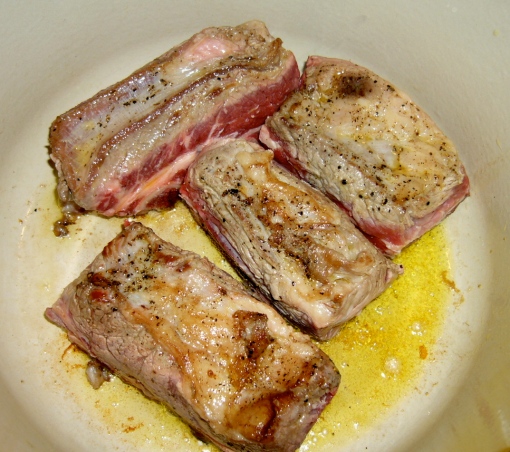A feast of mussels is one of the cheapest and easiest meals you can make. For less than $10 and 15 minutes of your time, you can have a big pile of tasty mussels to share. Serve with fresh bread or toast to mop up the delicious sauce.
Preparing Mussels for Cooking
Many of the mussels found in Canada and the U.S. come from Prince Edward Island. They should be easy to find at fish markets and the fish department of most grocery stores. They’re very easy to cook, however, there are a few guidelines to follow for safe handling:
- Discard any mussels with cracked or broken shells.
- Rinse the mussles in cold water and pluck off any ‘beards’ that are present on the shell. The ‘beard’ is a moss-like growth that keeps the mussel attached when it is growing in the water. Soak the mussels for about 15 minutes in a large bowl of cold water to ensure they are clean and free of grit.
- Make sure all mussel shells are tightly closed before cooking. If a shell is slightly open, give it a light tap on a hard surface – if it doesn’t close up, the mussel may be dead and it should be discarded.
- Mussels need to steam for about 10 minutes to fully cook and their shells will open once they’re done. Inspect cooked mussels before serving and throw away any that do not open. Do not force closed shells open – this is an indication that the mussel is dead and may cause illness if consumed.
Mussels in a Leek Cream Sauce
Makes about 50 mussels
This recipe should make plenty for two to four people (depending on whether it’s a starter or main). You can easily double or triple the recipe if you have a big enough pot.
- 2 lbs. (907 g) mussels, cleaned and inspected (see instructions above)
- 4 medium or 3 large leeks, white and light green parts only
- 2 Tablespoons neutral oil, such as canola or safflower
- 1 clove garlic, chopped
- 1 Tablespoon chopped fresh thyme or 1-1/2 teaspoons dried
- 1 cup dry white wine
- 2 Tablespoons tomato paste
- ½ cup whipping cream
- Salt and pepper, to taste
- Chopped thyme or parsley to garnish – optional
- Trim the leeks of any roots and tough green tops. Slice them lengthwise down the middle and run under cold water to ensure any sand is rinsed from their layers. Pat the leeks dry and cut into thin ‘rings’, about ¼” thick.
- In a large stockpot with a lid, heat the oil on medium-high heat. Add the chopped leeks and let cook until they begin to soften, about 5 minutes. Add garlic and thyme and let cook for another minute, stirring occasionally.
- Pour in the wine and stir the tomato paste into the mixture until thoroughly combined. Dump in the cleaned mussels.
- Put the lid on the pot and let the mussels steam for 10 minutes. Check on them after 10 minutes and if a lot of the shells are still closed, let them steam for another 2 minutes.
- Remove pot lid and stir in the cream. Discard any shells that haven’t opened. Season with salt and pepper and pour the mussels and sauce into a large bowl. Garnish with chopped parsley or thyme if desired.
- Serve the mussels with fresh toast or bread to mop up the sauce or with homemade frites, if you’re feeling ambitious.
Bon Appétit and Enjoy!
This article first appeared on Suite 101.com.
















